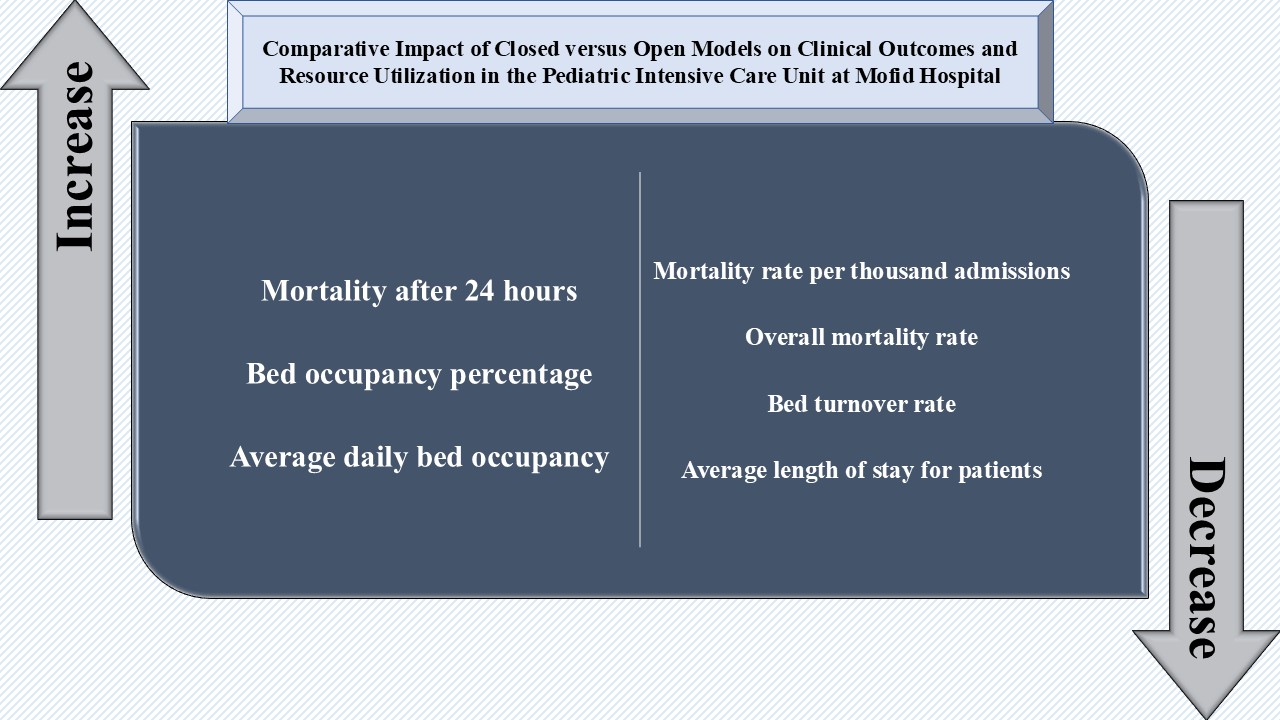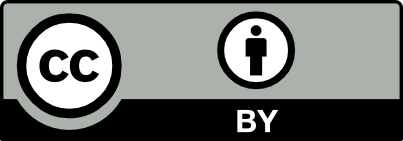Volume 35, Issue 250 (11-2025)
J Mazandaran Univ Med Sci 2025, 35(250): 219-225 |
Back to browse issues page
Download citation:
BibTeX | RIS | EndNote | Medlars | ProCite | Reference Manager | RefWorks
Send citation to:



BibTeX | RIS | EndNote | Medlars | ProCite | Reference Manager | RefWorks
Send citation to:
Ahmadizadeh S N, Shabani F, Hashemi S M, Behzad A. Comparative Impact of Closed versus Open Models on Clinical Outcomes and Resource Utilization in the Pediatric Intensive Care Unit at Mofid Hospital. J Mazandaran Univ Med Sci 2025; 35 (250) :219-225
URL: http://jmums.mazums.ac.ir/article-1-21844-en.html
URL: http://jmums.mazums.ac.ir/article-1-21844-en.html
Abstract: (558 Views)
Background and purpose: Intensive care units (ICUs) are designed to provide care for critically ill patients. Given the complexity of the equipment and the expertise required, the costs of establishing and maintaining ICUs are substantial. One of the key determinants of their effectiveness is the management model employed. This study aimed to evaluate clinical outcomes and resource utilization before and after the implementation of a closed management model in the Pediatric Intensive Care Unit (PICU) at Mofid Hospital.
Materials and methods: This descriptive-analytical cross-sectional study analyzed hospital administrative data collected over a ten-year period, from August 2014 to July 2024. Key indicators, including mortality rates and bed utilization, were assessed using descriptive and inferential statistical methods in SPSS software.
Results: Early mortality (within 24 hours) did not differ significantly between the two five-year periods. However, late mortality (after 24 hours) increased during the closed model period. Despite this, both the overall mortality rate and mortality per 1,000 admissions decreased following the implementation of the closed model. During this period, the bed occupancy rate declined by 3%, whereas the average daily bed occupancy increased by 3.5 patients. Moreover, the bed turnover rate improved, and the average length of stay decreased, indicating more efficient resource utilization.
Conclusion: To allow meaningful comparisons of mortality across PICUs nationwide, it is recommended that illness severity at admission be standardized as a national criterion. Delayed referral of patients to the PICU can impede timely and effective interventions by specialists, potentially contributing to higher mortality rates.
Materials and methods: This descriptive-analytical cross-sectional study analyzed hospital administrative data collected over a ten-year period, from August 2014 to July 2024. Key indicators, including mortality rates and bed utilization, were assessed using descriptive and inferential statistical methods in SPSS software.
Results: Early mortality (within 24 hours) did not differ significantly between the two five-year periods. However, late mortality (after 24 hours) increased during the closed model period. Despite this, both the overall mortality rate and mortality per 1,000 admissions decreased following the implementation of the closed model. During this period, the bed occupancy rate declined by 3%, whereas the average daily bed occupancy increased by 3.5 patients. Moreover, the bed turnover rate improved, and the average length of stay decreased, indicating more efficient resource utilization.
Conclusion: To allow meaningful comparisons of mortality across PICUs nationwide, it is recommended that illness severity at admission be standardized as a national criterion. Delayed referral of patients to the PICU can impede timely and effective interventions by specialists, potentially contributing to higher mortality rates.
Type of Study: Brief Report |
Subject:
Policy and Management
Send email to the article author
| Rights and permissions | |
 |
This work is licensed under a Creative Commons Attribution-NonCommercial 4.0 International License. |







